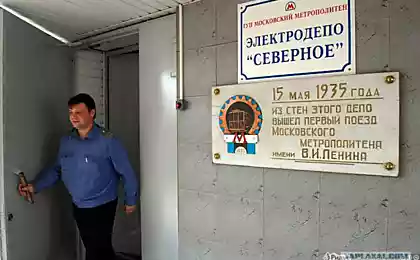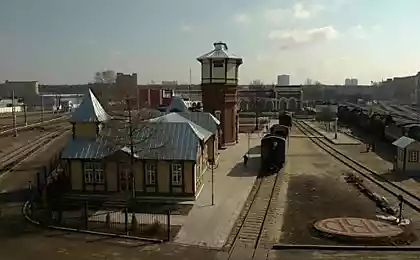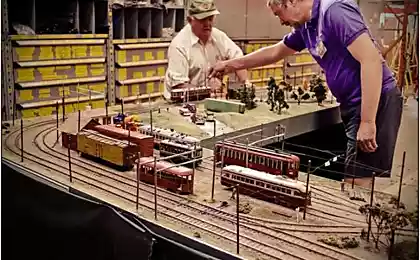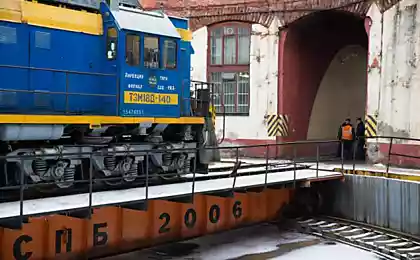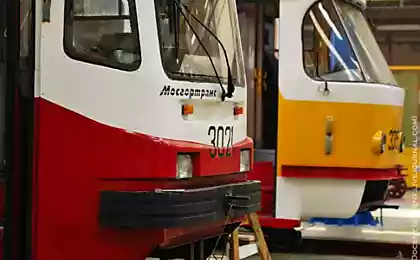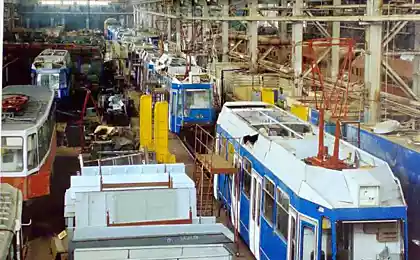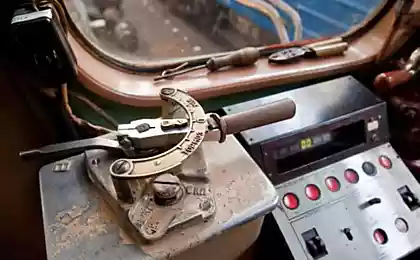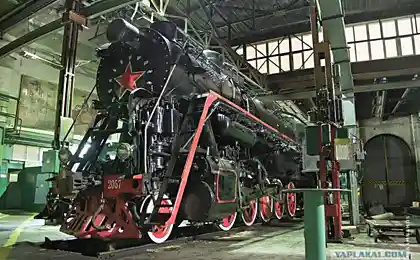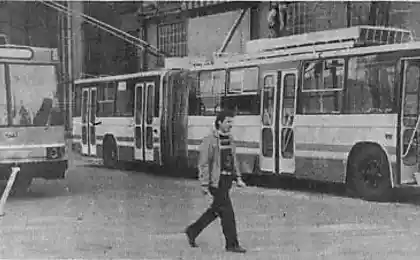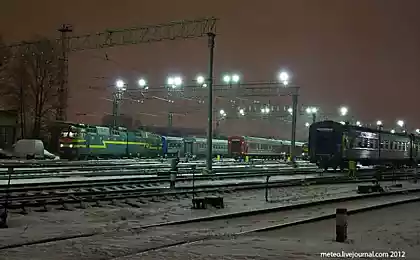883
The oldest tram depot in Moscow
Production zyalt blogger reporting from one of the oldest tram depot in Moscow in 2012 (very soon) year it will be 100 years old! During that time, we passed through the gates of the depot all types of trams ever operated in Moscow.
Tram - historically the second type of urban passenger transport in Moscow, the successor tram. In 1940, the share of rail transport of passengers in the city reached 70%, and as of 2007 only about 5%, although in some outlying areas (eg Metrogorodok) it is the main passenger transport, allowing quick access to the subway. The highest density of tram lines in the city is located east of the center, near the river Yauza.
31 ph
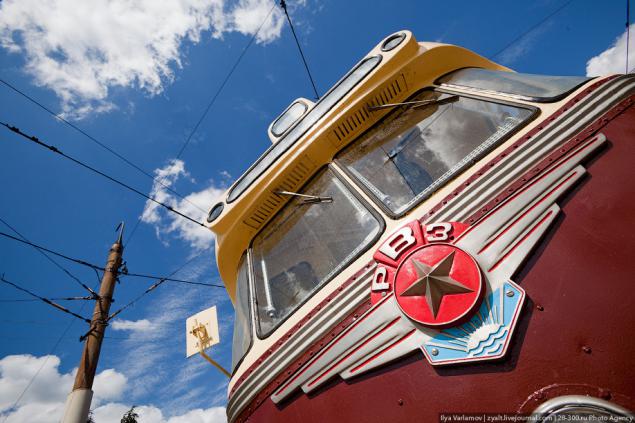
Now depot Rusakov 178 trams, which include linear rolling stock (passenger trams), as well as snow blowers, zheloboochestiteli, relsoshlifovalschiki, track geometry car and watering wagons. Depot serves nine routes: 2, 13, 29, 32, 34, 36, 37, 46 minutes and 4 right ring.
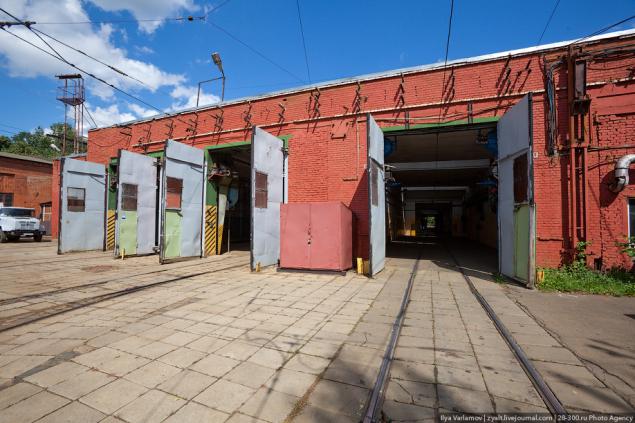
There is such a thing as "the opening of the route." Early in the morning the first tram leaves the station and non-stop (zero flight) travels to its destination, where around 4:30 opens the route. Breakage first tram is always ready a spare, be sure to open the route to the specified time. Complete the trams run at about one o'clock. On weekdays in the city from the depot Rusakov go to 120 trams, over the weekend about 100.
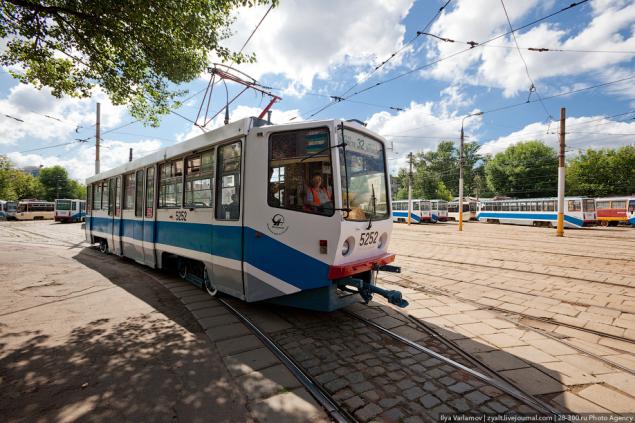
For a full day on the tram and spend replace two drivers, and the car runs at an average of 250 kilometers. A maximum of up to 400 kilometers.
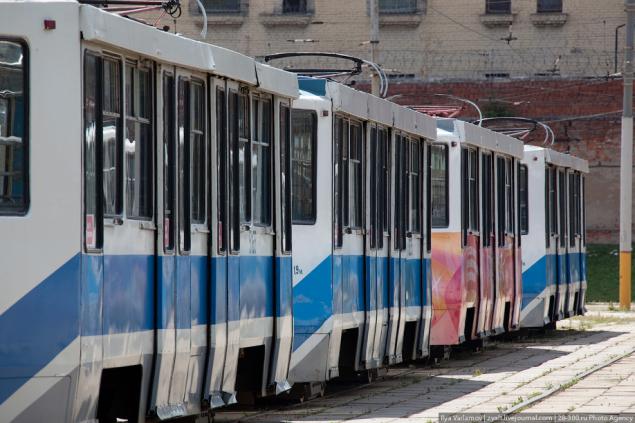
Each driver has a set of documents:
- Logbook maintenance, which made the application of the driver for the repair and the level of experts on the work performed
- A roadmap, which notes the arrival of the tram on the destination and time of departure and arrival at the depot
- Driving license (right)
- Insurance
- The schedule of the arrival time at each stop. Anyone who frequently travels by tram to the final stop, should have noticed that there is indeed a kind of tram schedule. Of course, the Moscow traffic jams and increase the load time of passengers because of the validators do not allow always strictly follow the schedule.
Full running rail for the time of operation can be up to 750,000 kilometers. Some trams are 15 years or more (especially in the regions).
Snowplow /
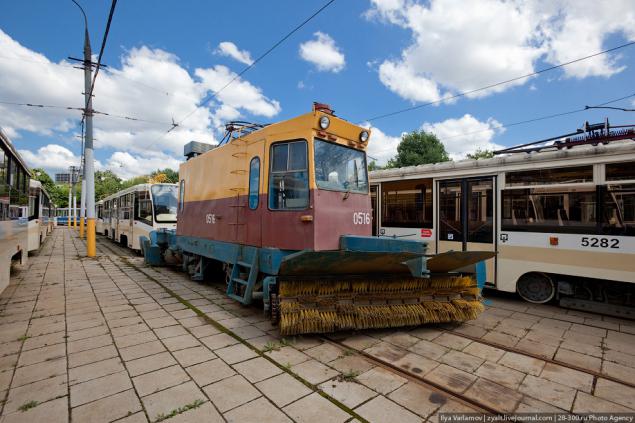
Most often, the trams used in single mode, at least - in a train of two cars. And in the old days on the street could be seen and three tram coupling.
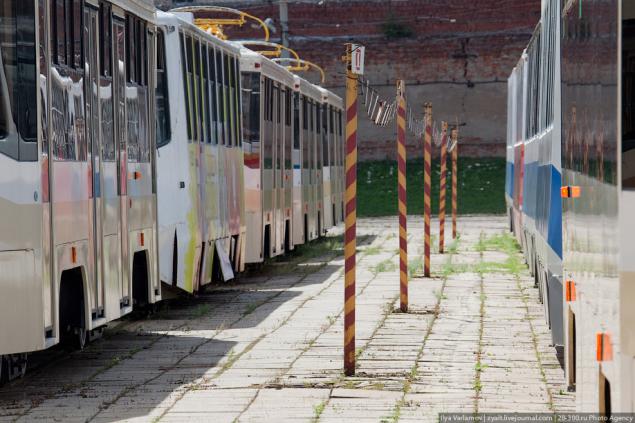
In 2009, the depot has received 29 new cars. Each tram is worth about 10 million rubles, and the overhaul of the plant costs about 300 thousand rubles.
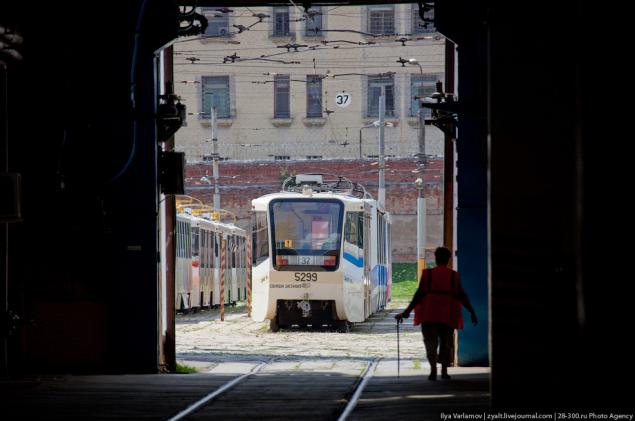
Also a lot of money is spent on repairs after the trams vandalism. For example, the rear window of the tram depot will cost 60 thousand rubles.
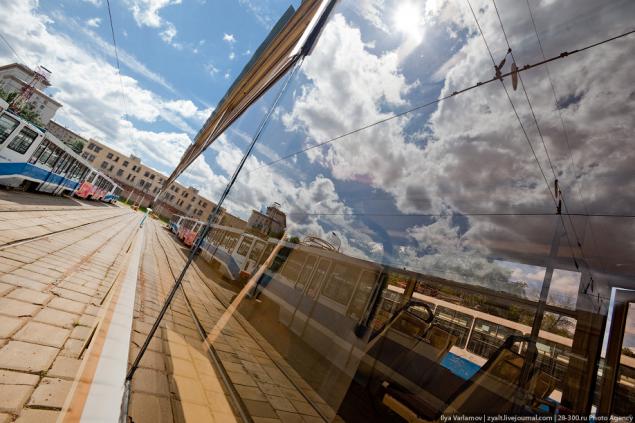
09
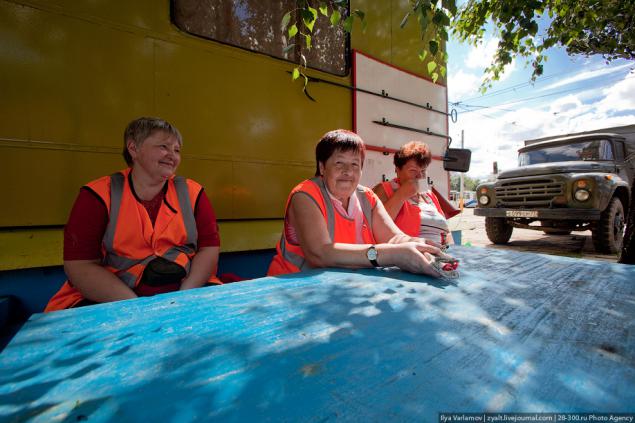
This tower, is engaged in the arrangement of the rolling stock.
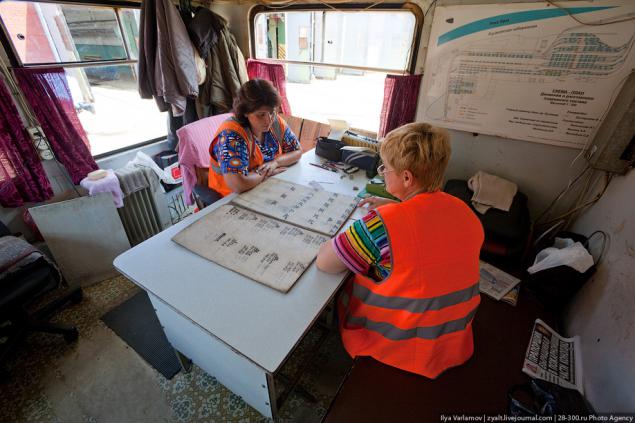
Nearby there is a recreation room, where you can eat and relax.

12
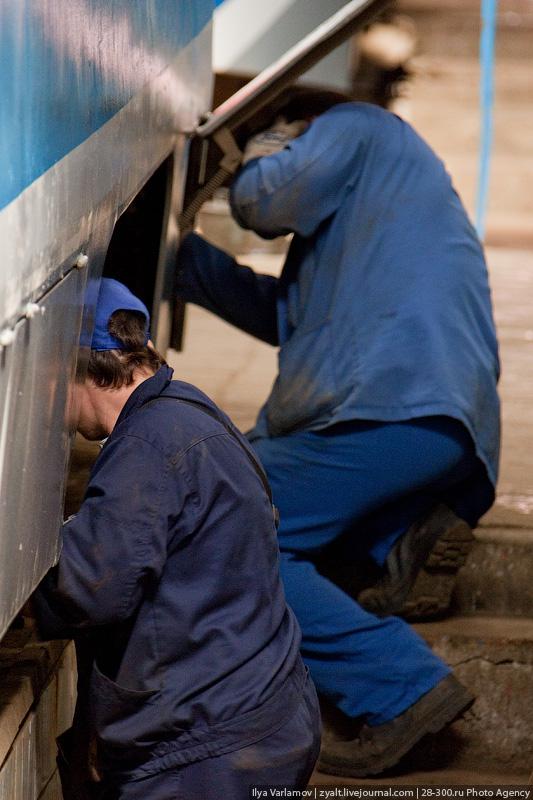
13

Every 60 thousand kilometers carried out a planned "average" repair, where the tram is almost completely disassembled, inspected all the components and assemblies. After four such large repairs (about 240,000 kilometers) goes to the tram car factory for repair.
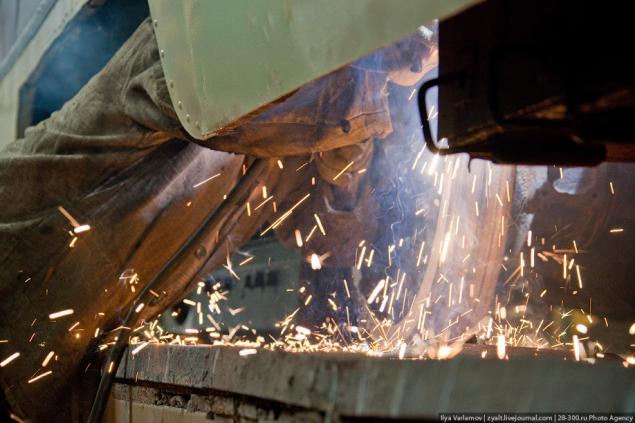
Occupational Safety and Health.

The place for the break.
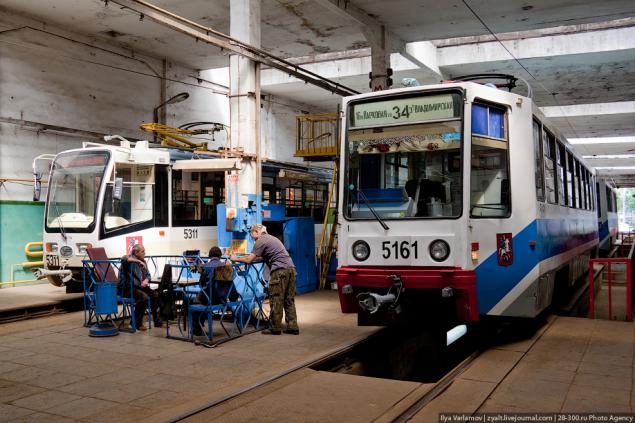
Regular tram weighs about 20 tons.
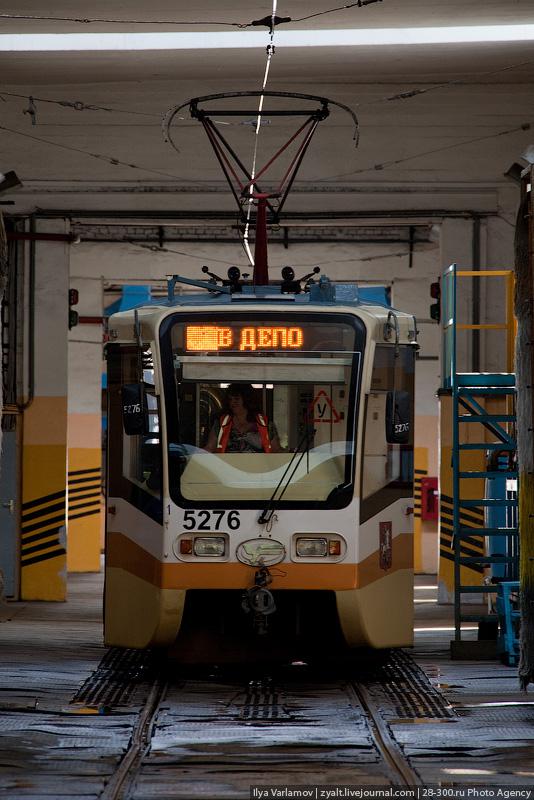
For durable service tram made its scheduled maintenance. Workshop repair and maintenance of rolling stock includes 32 inspection "of the ditch." On a daily basis they are driving 20 cars on the TO-1 per night and spend all necessary works. On that day-2 is up to 10 trams, which are carried out more complex work with disassemble the entire apparatus, a repair takes several days.
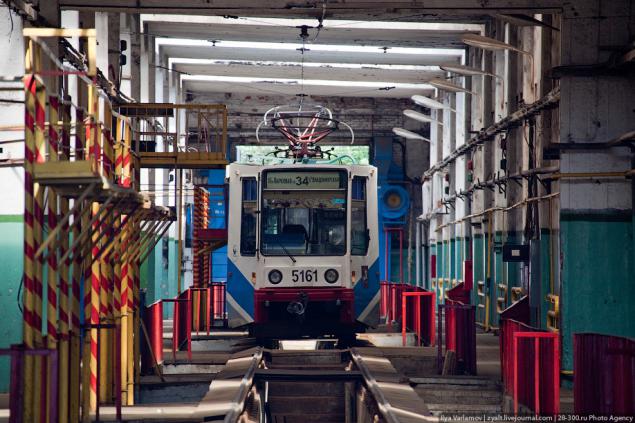
TO-1 each car is held once a week, 2 - once a month. An important element of the tram - wheel truck. It contains the engines, gearboxes and braking devices. All cars set of four 50-kilowatt motor, one for each axle.
The cart is equipped with three types of brakes:
• electrodynamic (traction motor as a generator that return some of the energy back to the grid)
• drum-drum with a spring and an electromagnetic drive (similar to automobile brakes)
• electromagnetic rail (emergency braking)
For the service brake is electrodynamic brake, slowing the car to almost zero. Dotormazhivanie to a stop is made drum brake. For emergency braking using magnetic rail brakes, where the block anchored to the rail and the force pressing it may be several times the weight of the tram.
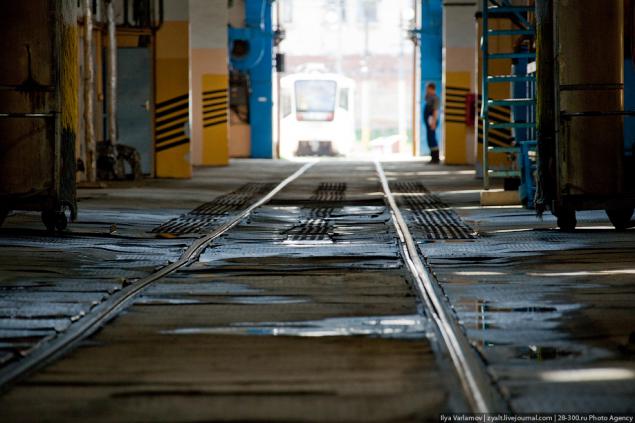
Almost every depot in Moscow, there are the old trams. In this tram depot Rusakovskaya EEO-6.
After such a long and laborious path of modernization of cars from 1949 to 1957, the Riga Carriage Works in 1960 finally released as known to most cities of our vast country wagon EEO-6. For the vast number of cities this car became the main model tram. Even today a number of tram systems exploit these "reminders of MTV", seeming now very old and archaic, often the cars of this brand are a very significant part of the city park cars (closest to the Moscow city until 2002 every day is rolling out on the line dozens of "RVZshek "was a glorious and wonderful Kolomna - the best tram near Moscow city). This is not too surprising - the release of cars (after two modifications) stopped only in 1988.

21
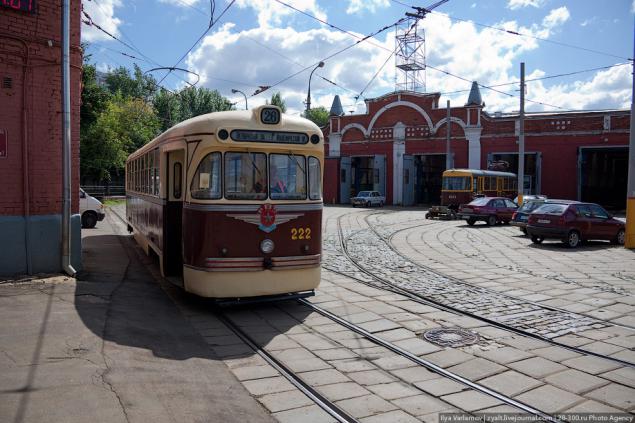
This copy has got to the depot in a terrible state, rusty and covered in moss. It was restored and now it takes a worthy place in the collections of the Metropolitan trams.
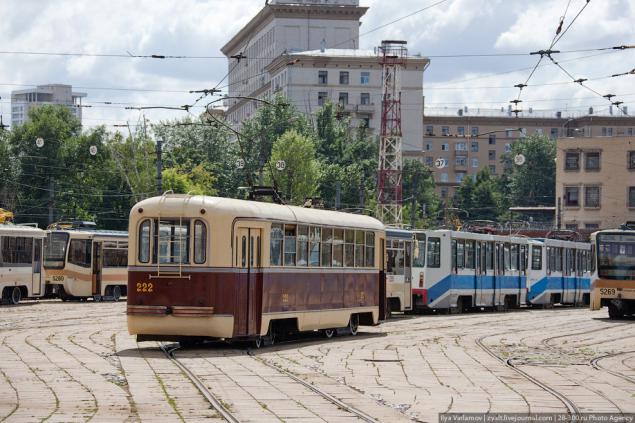
In Moscow, these trams were operated from 1960 to 1966. In Kolomna daily to the streets dozens of EEO until 2002!

In developing this model (as compared to the EEO-57) bought the car wide doors without partitions in the middle and some other features not deprived of proven hydraulic shock absorbers. In 1966, trucks have been modified and eletkrooborudovanie in 1975 changed trim and train newly acquired ability to operate on a system of many units, but for Moscow, conquered Tatras, alas, these modifications have had no value.
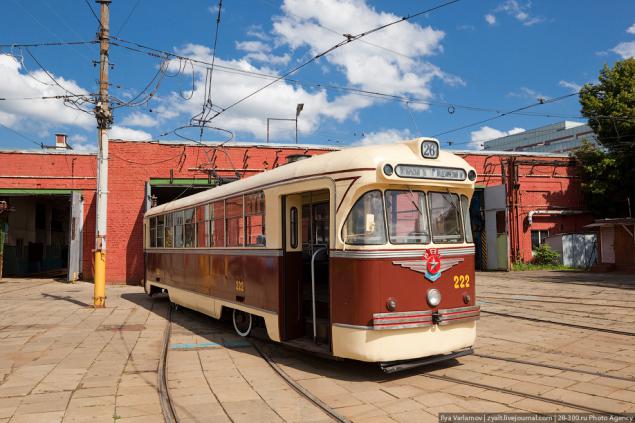
In 1960, 20 cars EEO-6 (one of the first issued by the plant) came in Apakovskoe depots and operated for several years, after which they were transferred to other cities.
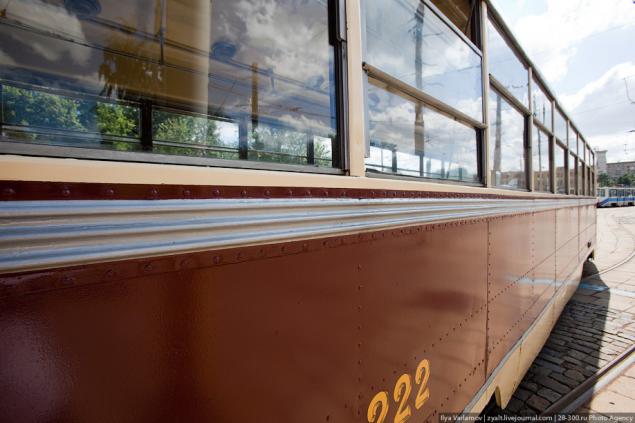
Specifications:
Years - 1947-1961
Years of operation in Moscow - 1960-1966
Produced by the enterprise - EEO
Length, m - 13, 75
The base carriage, m - 6, 4
Base trolley, m - 1, 94
Tara T - 18, 4
Beds - 136
Places seating - 36
Speed, km / h - 60
Power kW - 4x31
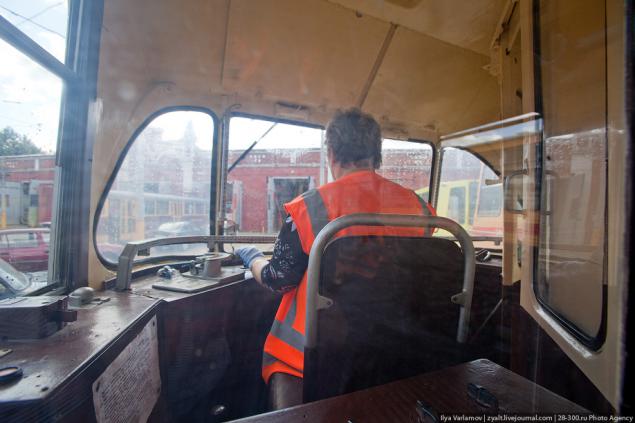
27
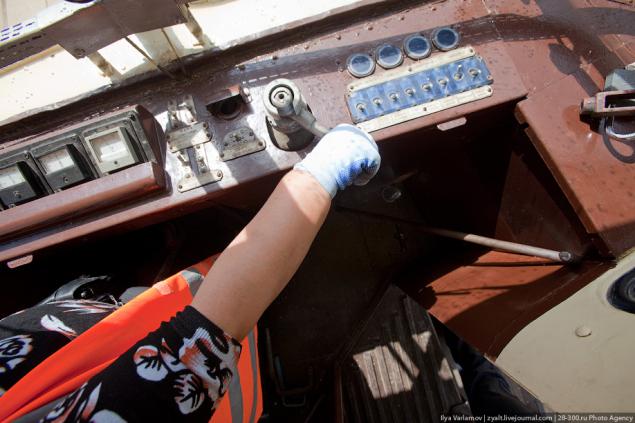
28
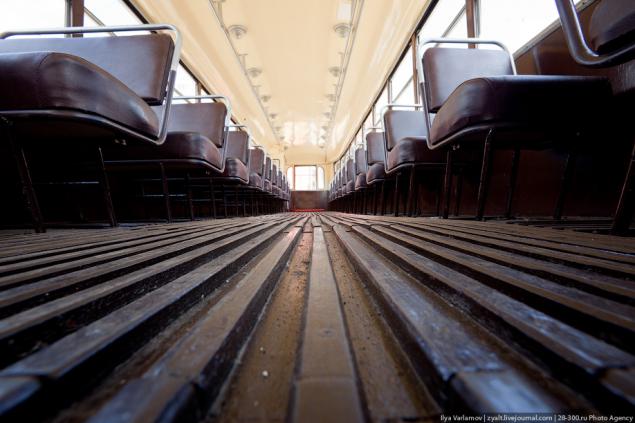
29
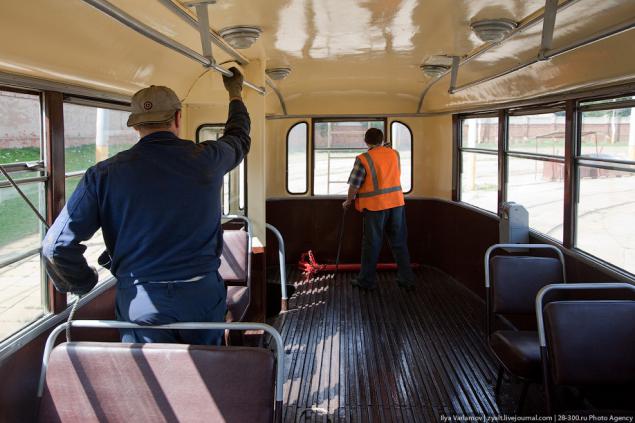
Before cleaning it is necessary to manually close all windows.

Depot Rusakov one of the first commissioned the mechanized washing machines for rolling stock. Especially for our visit, we wash vintage tram EEO-6 Riga Carriage Works.
If an accident is going to committee, which decides what to do with the tram - to repair the depot (if not damaged frame) sent to the plant or to cancel. May write off the old tram which was too expensive to repair.

Source:
Tram - historically the second type of urban passenger transport in Moscow, the successor tram. In 1940, the share of rail transport of passengers in the city reached 70%, and as of 2007 only about 5%, although in some outlying areas (eg Metrogorodok) it is the main passenger transport, allowing quick access to the subway. The highest density of tram lines in the city is located east of the center, near the river Yauza.
31 ph

Now depot Rusakov 178 trams, which include linear rolling stock (passenger trams), as well as snow blowers, zheloboochestiteli, relsoshlifovalschiki, track geometry car and watering wagons. Depot serves nine routes: 2, 13, 29, 32, 34, 36, 37, 46 minutes and 4 right ring.

There is such a thing as "the opening of the route." Early in the morning the first tram leaves the station and non-stop (zero flight) travels to its destination, where around 4:30 opens the route. Breakage first tram is always ready a spare, be sure to open the route to the specified time. Complete the trams run at about one o'clock. On weekdays in the city from the depot Rusakov go to 120 trams, over the weekend about 100.

For a full day on the tram and spend replace two drivers, and the car runs at an average of 250 kilometers. A maximum of up to 400 kilometers.

Each driver has a set of documents:
- Logbook maintenance, which made the application of the driver for the repair and the level of experts on the work performed
- A roadmap, which notes the arrival of the tram on the destination and time of departure and arrival at the depot
- Driving license (right)
- Insurance
- The schedule of the arrival time at each stop. Anyone who frequently travels by tram to the final stop, should have noticed that there is indeed a kind of tram schedule. Of course, the Moscow traffic jams and increase the load time of passengers because of the validators do not allow always strictly follow the schedule.
Full running rail for the time of operation can be up to 750,000 kilometers. Some trams are 15 years or more (especially in the regions).
Snowplow /

Most often, the trams used in single mode, at least - in a train of two cars. And in the old days on the street could be seen and three tram coupling.

In 2009, the depot has received 29 new cars. Each tram is worth about 10 million rubles, and the overhaul of the plant costs about 300 thousand rubles.

Also a lot of money is spent on repairs after the trams vandalism. For example, the rear window of the tram depot will cost 60 thousand rubles.

09

This tower, is engaged in the arrangement of the rolling stock.

Nearby there is a recreation room, where you can eat and relax.

12

13

Every 60 thousand kilometers carried out a planned "average" repair, where the tram is almost completely disassembled, inspected all the components and assemblies. After four such large repairs (about 240,000 kilometers) goes to the tram car factory for repair.

Occupational Safety and Health.

The place for the break.

Regular tram weighs about 20 tons.

For durable service tram made its scheduled maintenance. Workshop repair and maintenance of rolling stock includes 32 inspection "of the ditch." On a daily basis they are driving 20 cars on the TO-1 per night and spend all necessary works. On that day-2 is up to 10 trams, which are carried out more complex work with disassemble the entire apparatus, a repair takes several days.

TO-1 each car is held once a week, 2 - once a month. An important element of the tram - wheel truck. It contains the engines, gearboxes and braking devices. All cars set of four 50-kilowatt motor, one for each axle.
The cart is equipped with three types of brakes:
• electrodynamic (traction motor as a generator that return some of the energy back to the grid)
• drum-drum with a spring and an electromagnetic drive (similar to automobile brakes)
• electromagnetic rail (emergency braking)
For the service brake is electrodynamic brake, slowing the car to almost zero. Dotormazhivanie to a stop is made drum brake. For emergency braking using magnetic rail brakes, where the block anchored to the rail and the force pressing it may be several times the weight of the tram.

Almost every depot in Moscow, there are the old trams. In this tram depot Rusakovskaya EEO-6.
After such a long and laborious path of modernization of cars from 1949 to 1957, the Riga Carriage Works in 1960 finally released as known to most cities of our vast country wagon EEO-6. For the vast number of cities this car became the main model tram. Even today a number of tram systems exploit these "reminders of MTV", seeming now very old and archaic, often the cars of this brand are a very significant part of the city park cars (closest to the Moscow city until 2002 every day is rolling out on the line dozens of "RVZshek "was a glorious and wonderful Kolomna - the best tram near Moscow city). This is not too surprising - the release of cars (after two modifications) stopped only in 1988.

21

This copy has got to the depot in a terrible state, rusty and covered in moss. It was restored and now it takes a worthy place in the collections of the Metropolitan trams.

In Moscow, these trams were operated from 1960 to 1966. In Kolomna daily to the streets dozens of EEO until 2002!

In developing this model (as compared to the EEO-57) bought the car wide doors without partitions in the middle and some other features not deprived of proven hydraulic shock absorbers. In 1966, trucks have been modified and eletkrooborudovanie in 1975 changed trim and train newly acquired ability to operate on a system of many units, but for Moscow, conquered Tatras, alas, these modifications have had no value.

In 1960, 20 cars EEO-6 (one of the first issued by the plant) came in Apakovskoe depots and operated for several years, after which they were transferred to other cities.

Specifications:
Years - 1947-1961
Years of operation in Moscow - 1960-1966
Produced by the enterprise - EEO
Length, m - 13, 75
The base carriage, m - 6, 4
Base trolley, m - 1, 94
Tara T - 18, 4
Beds - 136
Places seating - 36
Speed, km / h - 60
Power kW - 4x31

27

28

29

Before cleaning it is necessary to manually close all windows.

Depot Rusakov one of the first commissioned the mechanized washing machines for rolling stock. Especially for our visit, we wash vintage tram EEO-6 Riga Carriage Works.
If an accident is going to committee, which decides what to do with the tram - to repair the depot (if not damaged frame) sent to the plant or to cancel. May write off the old tram which was too expensive to repair.

Source:
